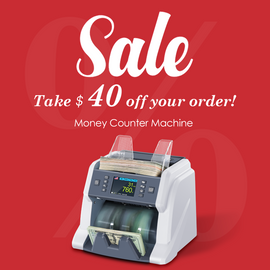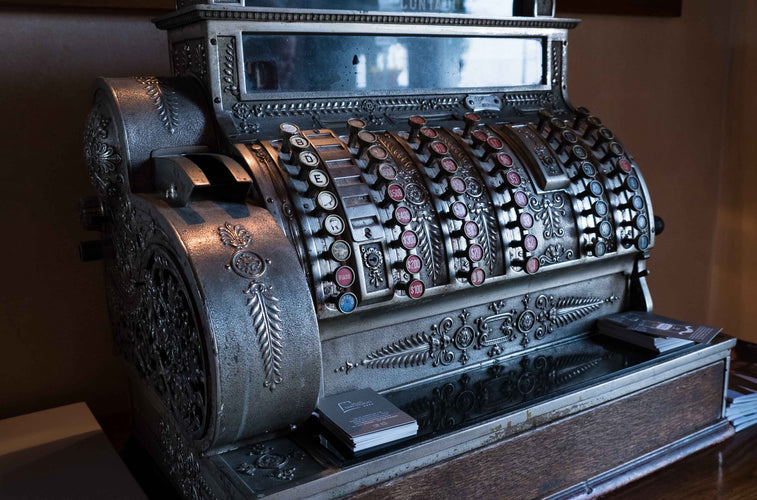For any business that regularly deals with large amounts of cash, a currency counter is an essential tool that can help the company save significant time and cost. It's such a fantastic invention. Are you curious about when was the first cash counting machine invented? In this article, we will explore the history of the first currency counter, how it evolved and the characteristics of modern currency counters.
History of the First Currency Counter
The Chinese invented the first cash counting machine in 1958. It was about the same size as an office desk, and its structure was similar to that of a printing press, with features such as an air pump, suction nozzle, counting shaft, and motor. So how does this cash counting machine work? All you have to do is place the money on the suction nozzle, and the banknotes will be sucked up and sent one by one to the counting shaft for counting. However, the speed was very slow.
With the advancement of technology and increasing demand, an electromagnetic counter was added on top of the first generation of currency counting machines, and the overall size was reduced significantly. The specific structure included 2.5 cm wooden boards on both sides. The twisting, driving, and counting shaft were all made of wood, with 6200 bearings installed on both ends. The joints were fastened with clipped-off big pins to increase the friction during twisting. The upper and lower counting shafts were fitted with conductive electrodes of 0.1 mm thick silver soldering sheets. When no bills passed, the upper and lower electrodes were connected, and the electromagnetic counter did not count. When a bill passed, the upper and lower electrodes were disconnected, and the electromagnetic counter counted one.
Although the electromagnetic counter could count automatically, its principle of using electric current to generate a magnetic field meant that it could overheat, short circuit, or be damaged when there were too many bills to count. Furthermore, the precision of the electromagnetic counter could have been more satisfactory when counting large amounts of bills. Additionally, it could not accurately calculate or verify the authenticity of some particular or damaged bills.
Digital Technologies of the Modern Currency Counters
To further improve the accuracy and durability of cash counting machines, people began using more sturdy materials and advanced counting technologies:
- Optical sensors - modern cash counting machines use optical sensors to detect patterns and images on banknotes. The detected results are quickly compared with the data of genuine currency stored in the database, thereby accurately identifying different currency types and denominations. In addition, the sensors can collect information on the detected banknotes to upgrade the database of genuine notes, improving the accuracy of detecting forged banknotes.
- Image processing technology - cash counting machines use image processing technology to detect the authenticity of banknotes. This technology can detect banknotes' watermarks, security stripes, and other anti-counterfeiting features.
- Computer vision technology - this technology allows cash counting machines to capture images of banknotes through cameras and compare them with images in the database to determine their authenticity.
Adopting these digital technologies has significantly improved the accuracy, speed, and security of modern cash counting machines.
What's Next for Money Counters?
As technology continues to evolve, what does the future hold for money counter machines? Will they become more compact, faster, or even more secure? Will Money Counter Machines Be Replaced By Wireless Payments? For those interested in what the next generation of money counters might look like, you can read more in our article on The Future of Money Counter Machines.
Conclusion
In conclusion, the invention of cash counting machines has revolutionized how businesses deal with large amounts of cash. From the first generation of currency counters in 1958 to the modern ones that use digital technology, these machines have come a long way regarding accuracy, speed, and security. The advancements in materials and counting technologies have made it possible for modern cash counting machines not only to count but also to detect the authenticity of banknotes. This has saved businesses significant time and cost, making these machines an essential tool for any business or organization that deals with large amounts of cash. The evolution of cash counting machines is a testament to human ingenuity and our constant pursuit of innovation to make our lives easier and more efficient.







